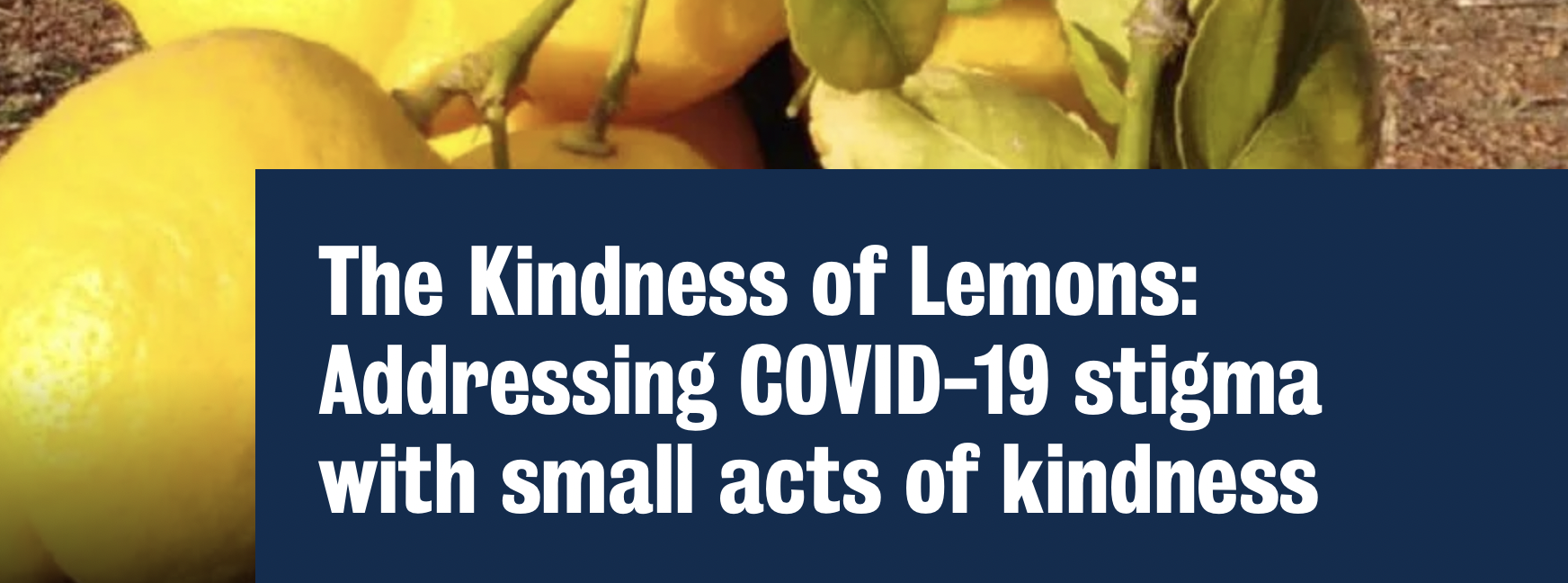‘There are two big lemon trees in the garden, growing delicious organic and very friendly lemons that end up rotting away because no one is eating them’. These are the words that my mother says every year around spring time. She lives in the Balearic Islands, Spain, and what she really means is ‘Come visit me because I miss you’. However, this April, was an exception because she knew I couldn’t travel to see her.
So instead of using the lemons as a temptation to get me home, my mum has started a local initiative as a gesture of kindness and takes baskets full of lemons to local shops and nearby gas stations, so that people can take as many as they need and no lemons are going to waste.
Spain is one of the hardest hit countries by COVID -19. People living in small villages in the islands, just like my mum, rely entirely on tourism for their survival. When the government initiated a strict lockdown regime, quarantining the country, the local population was shaken, scared and demoralised. Food became more expensive, unemployment in the islands started to rise reaching 87.7%, and people’s mistrust, anxiety and anger towards others became more apparent.
Stigma during public health emergencies
Public health emergencies are understandably very stressful periods, filled with uncertainties and concerns for many. Such periods of heightened pressures and anxieties can also, unfortunately, be a breeding ground for stigmatising attitudes and discriminatory behaviours. These are often fuelled by misinformation and a lack of knowledge.
The fear, mistrust, and subsequent stigmatising and discriminatory behaviours can be targeted at certain groups of people, nationalities, geographic areas, or professions that become associated with the health emergency and illness. This is the case particularly for infectious disease outbreaks, where fears of contagious and attributions of blame are common. And it is often the most vulnerable populations within our communities who face an increased risk of both illness and of becoming directly impacted by health emergencies. The negative impact of this can be compounded by damaging treatment from others, due to systemic inequalities in our society.
In the past we have seen stigma and discrimination in relation to previous influenza pandemics, infectious diseases like tuberculosis, Ebola, HIV/AIDS, and other non-communicable diseases, such as mental illness. For example, when the 2003 severe acute respiratory syndrome (SARS) surged in the United States, it was confirmed that successfully controlling transmission required addressing the stigma around the decease. If people were feared and stigmatised they did not seek treatment and remained in the community undetected, further exposing more lives to the illness (Person et al., 2004).
In Sierra Leone, Ebola virus disease (EVD)-related internalised and enacted stigma among the survivors hindered their recovery and re-integration in the community. EVD survivors are known to suffer from short and long-term physical symptoms and mental complications due to the traumatic experience of surviving the illness (James et al., 2020). Now, during the current COVID-19 pandemic, daily media reports remind us of the rise in hostility and xenophobia that many people who are affected by, or associated with, the illness are facing.
Language and the media
This surge of stigma and discrimination has not gone unnoticed, and various briefs and best practice statements to mitigate their impacts have been issued. For example, in February 2020 the World Health Organization released their ‘Words Matter’ guidance, on the role of language and words in preventing and addressing social stigma related to COVID -19, providing a list of ‘dos’ and ‘don’ts’ when talking about COVID-19.
This guidance is of particular use given the large impact that media reports have on shaping stigma. The media has widely reported on cases of harassment or human rights violations related to COVID-19 due to fear of infection, or on placing blame for the outbreak of the virus on given people or groups. Reporting accurately on real life issues is important in understanding the global nature of this pandemic and preventing us from thinking only about our own experience, but media reporting also needs to serve a greater purpose in delivering a message of hopefulness by providing access to resources that foster a sense of social responsibility, benevolence and empathy.
Combatting stigma with compassion
By showing compassion towards others, we strengthen our sense of interconnectedness, which can make us feel useful and reduces our levels of anxiety. Organisations such as Health in Mind and The Mental Health Foundation have created a list of resources of small initiatives each one of us can take that could make a difference in someone’s day. Recognising everyone’s contribution is vital for the wellbeing of our communities, especially those who work relentlessly to keep our streets clean, our shops stocked, our power plants operating and our water companies running.
In the same way, a kind word or gesture of kindness can go a long way in reducing apathy. Physical distancing and isolation should not turn into a social isolation. One example reflecting this principle is the initiative launched by the UK Culture Secretary Oliver Dowden in April 2020 to tackle loneliness during the coronavirus lockdown, by helping people stay connected in their local communities.
Being part of the bigger picture matters. Whether it’s starting a national campaign, a formalised local initiative, or simply by giving away free lemons to whoever needs them, these actions can all, bring society together in a crisis and transform stigmatising attitudes into smiley faces.
This story was first published on 18 May 2020, on King’s College London website.

